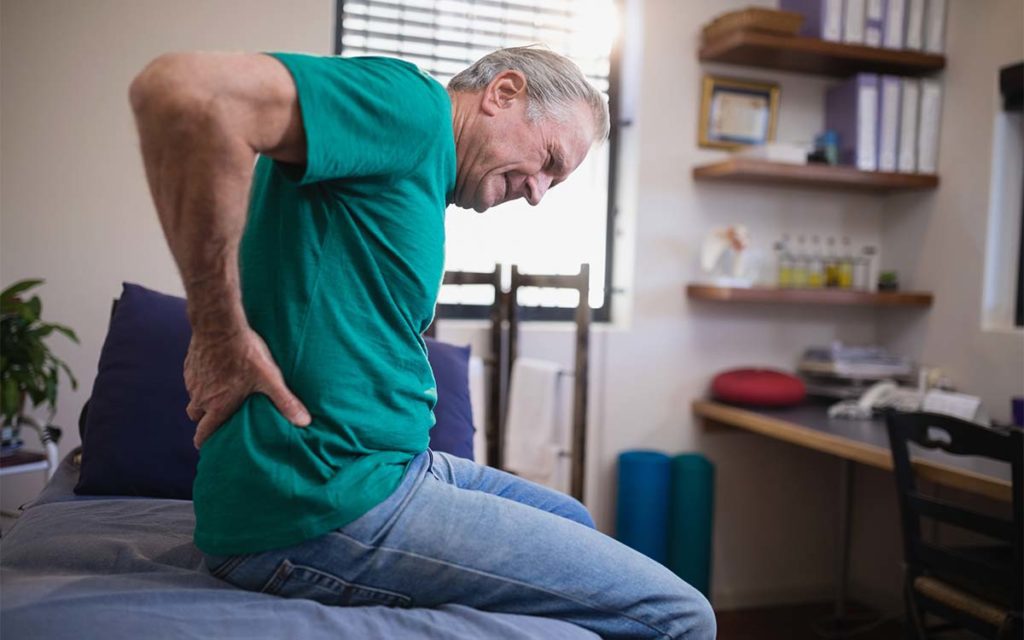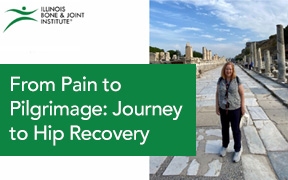This article is part of the the Ultimate Guide to Hip Pain Relief.
Experiencing hip pain may lead to questions around surgery. Many times, patients associate having pain with needing surgery. Luckily, this isn’t always the case. For hip pain, there are other methods of treatment that can be utilized before surgery.
Learn more about Hip Care at IBJI
Understanding the Hip Structure and Function
The hip joint is made of the ‘ball’ of the femur and the ‘socket’ which is part of the pelvis. The surfaces are covered with cartilage, the joint is sealed by the labrum, and the capsular ligaments connect the femur and pelvis. A large series of muscles attach to the femur and pelvis to allow hip joint function, the most commonly known are the ‘glutes.’ All these structures work in concert with each other to provide stable, painless, hip joint function. Any dysfunction within this series of structures can lead to pain, limping, and loss of function.
When the pain doesn’t go away with time and basic treatment, it may be time to see a hip specialist. When patients seek care from a hip doctor, the doctor will listen to the patient’s history, perform a physical examination, and evaluate X-rays and/or MRI. They will then make a diagnosis and recommend treatment. In some cases, the patient can manage the pain without surgery.

Managing hip pain without surgery is possible. IBJI's hip specialist give tips on what you can do to manage your hip pain. “Image by: wavebreakmedia/Shutterstock.com“
Common Hip Diagnoses
Hip Arthritis
This common condition is when the cartilage in the hip breaks down leading to pain and loss of function.
Gluteal Tendonitis/Tear
The gluteal attachment on the femur can deteriorate leading to pain.
Bursitis
A bursa is a structure that normally allows muscles and bone surfaces to glide smoothly against one another. In some cases, it may become inflamed leading to pain.
Treatment Options to Manage Hip Pain
There are a variety of treatment options that patients can do to help manage hip pain before considering surgery.
Activity modification
Most people have tried this before coming in. Avoiding activities that cause pain is a logical step to take, but often time is ineffective if the problem is severe.
Medications
Over the counter medications such as ibuprofen (Advil/Motrin), naproxen (Aleve), and acetaminophen (Tylenol) can be used safely and effectively for pain relief. As they are over the counter, these are considered safe medications if taken as recommended. Extended use of these medications should be monitored by your doctor and further evaluation of the underlying cause of pain can be considered. Prescription, non-narcotic medications are often used if over the counter medications are not effective.
Weight Loss
The hip joint “feels” several times more body weight in force during normal walking due to the muscle contraction of the hip. For people above their ideal body weight, this can lead to pain in the joint. Weight loss and proper nutrition can make a huge difference for people suffering with hip pain. IBJI offers the OrthoHealth (medical wellness) program which includes nutritional counseling and weight loss strategies.
Injections
The most commonly used injection around the hip is the cortisone shot. This is a steroid which acts as a powerful pain reliever and reduces inflammation. It can be used in the joint for arthritic conditions or in the bursa for inflammation. While useful, there is a lot of variability in how well and for how long an injection may work for an individual. In some cases, steroid injections may have detrimental effects on the body. If considering a steroid injection, discuss the pros and cons with your physician.
Physical Therapy
Physical therapy is a prescribed treatment for many hip conditions. Under the guidance of a physical therapist, patients can improve mobility and reduce pain for many of these conditions. Physical therapy can help build muscle strength and flexibility through a prescribed series of exercises. Other modalities, such as therapeutic massage and dry needle therapy are used to reduce pain emanating from the soft tissues. After the course of prescribed therapy, it is important to keep up with the home program recommended by the therapist.
The above treatments are very often effectively used alone or in combination with one another to help manage hip pain without surgery. If you are having pain in your hip, it does not automatically mean you will need a hip replacement. An IBJI hip specialist can help you diagnose and treat your hip pain.
Get Relief from Your Hip Pain Today
Manage Your Hip Pain with IBJI
Whether you are just starting out in your hip care journey or need a second opinion for your hip pain, IBJI’s hip surgeons are here to help provide you with the necessary care for your ailment. Get the relief you are seeking with the help of IBJI.
Schedule online with an IBJI hip surgeon to discuss treatment options and create an individualized approach to your care.
Check out IBJI’s additional online resources for hip care to learn more about conditions and read patient testimonials.
Schedule online with a Hip Doctor →
You might also like ...
- What is Hip Bursitis? Treatments, Causes and Diagnosis
- Davina’s OrthoHealth Patient Story
- Common Causes of Hip Pain and When to Seek Treatment
*This content is for information only and is not intended to replace the diagnosis, treatment, or medical advice from your treating healthcare professionals. The content does not provide medical advice, does not constitute the practice of medicine or other healthcare professional services, and does not create a doctor-patient relationship. You should not rely on this information as a substitute, nor does it replace professional medical advice, diagnosis, or treatment. If you have concerns or questions, seek the advice of your healthcare professionals. If you think you may have a medical emergency, call your doctor or 911 immediately. Do not rely on electronic communications or communicate through this website for immediate, urgent medical needs. This website is not designed to facilitate medical emergencies. The use of the information is at the reader’s own risk. The links are provided for information and convenience only. We cannot accept responsibility for the sites linked or the information found here. A link does not imply an endorsement of a site.





